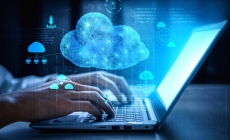-
UNION INTERIM BUDGET 2024-25 -
-
Are cryptocurrencies the future of the digital world economy -
-
Breaking Waves, Breaking News: Lakshadweep’s Recent Developments Explored -
-
The Impact of the Digital Economy on Business and Society -
-
Augmented Marketing: A Comprehensive Guide -
-
How To Strengthen Your Email Marketing Using AI -
-
How Artificial Intelligence and Digitization Are Transforming Our Lives -
-
What Data Science Tools do the Experts Recommend? -
-
Robotic Process Automation Will Transform Your Business? Check Here! -
-
Edge Computing: How it is Reshaping Cloud Infrastructure -
The Relationship between Healthureum and Medical Devices
The medical world is really a huge one. It does not start and end with doctors, nurses, and patients but extends to those behind the scenes professionals such as medical equipment engineers. Medical equipment plays a crucial role in healthcare because they are used for testing and patients and saving those in critical conditions.
This makes medical equipment very delicate machinery that can either save a life or end it. A fault in calibration might be the difference between life and death. As technology continues to take center stage, it is for medical devices also to receive the attention that has eluded them for quite some time. If medical technologists do not address them, it will come to haunt them in the future.
If you look in the automobile industry, there are reports of cars malfunctioning or catching fires. Somehow, these vehicles are traced and recalled back to the factory for correction and recalibration. The lesson in this is that there is no machine that is manufactured without defects. This defects might have grave implications if left unattended for too long. In the long run, there should be a system to monitor and track medical devices so that we can see how they work.
Blockchain, Healthureum, and Medical Devices
The development of the Healthureum has created an integrated network of medical practitioners, patients, research analysts, and philanthropists. However, an integrated community of medical devices is also required because it will aid in many ways including:
Usability of machines
As the blockchain network can be used to store patient and physician data, it is also important that the same network is made to hold, store, and share data related to medical devices. If the information about medical devices exists on the blockchain network, a lot of facts could be drawn from it.
• Durability – medical devices do not come cheap. They are very expensive and as such, need to be treated with care and respect. If any of them breaks down, it is the patients that suffer as they will be referred to other hospitals. This is a big disadvantage for them as they may need to travel long distances to find the nearest hospital.
By sharing information relating to medical equipment, healthcare institutions will have insights of how helpful a machine might be. It also aids us to see how easy it is to use and how quickly it breaks down. This information and some other bits of information will help you to predict when you might need a new one and what can be done to improve its quality.
• Self-monitoring devices – these devices have really taken the world by storm as they allow patients to monitor their health whilst at home or work. There are watches that sense a patient’s heartbeat and send some warning signs if the heartbeat rises above an acceptable level.
This is effective but only works if the patient is willing to comply with the warning or if he is not in danger. By registering such devices on the blockchain network, the alarm raised by these devices need to be monitored to check what causes these alarms.
As patients may not give feedback to their doctors about the conditions of their health, registering these devices may be used to tabulate data for research purposes. It is a source of medical data that can be used to uncover some hidden medical mysteries and truths.
• Monitoring and tracking stolen equipment – medical devices are highly specialized equipment that is not sold anywhere and anyone. However, some people steal these machines and sell them at reduced prices to unsuspecting doctors and healthcare practitioners.
By registering these machines on the blockchain and noting their serial numbers on the open blockchain network, it will be difficult for criminals to steal and sell medical equipment. Think of the vehicle database and how number plates are used to track stolen cars. The same principle can be applied to a blockchain network and not on a database.
• Automation of devices and equipment – medical equipment are like other types of equipment. They need to be serviced if their shelf life is to be prolonged. The processing of servicing these machines can be automated on a blockchain network.
The way forward
As we continue to make strides in blockchain technology and other technological areas such as the internet of things (which deals with the interconnection of devices), we can see that it is important to maintain a ledger system of medical devices in order to gain some insights that we will never get from relying on ordinary research methods.































